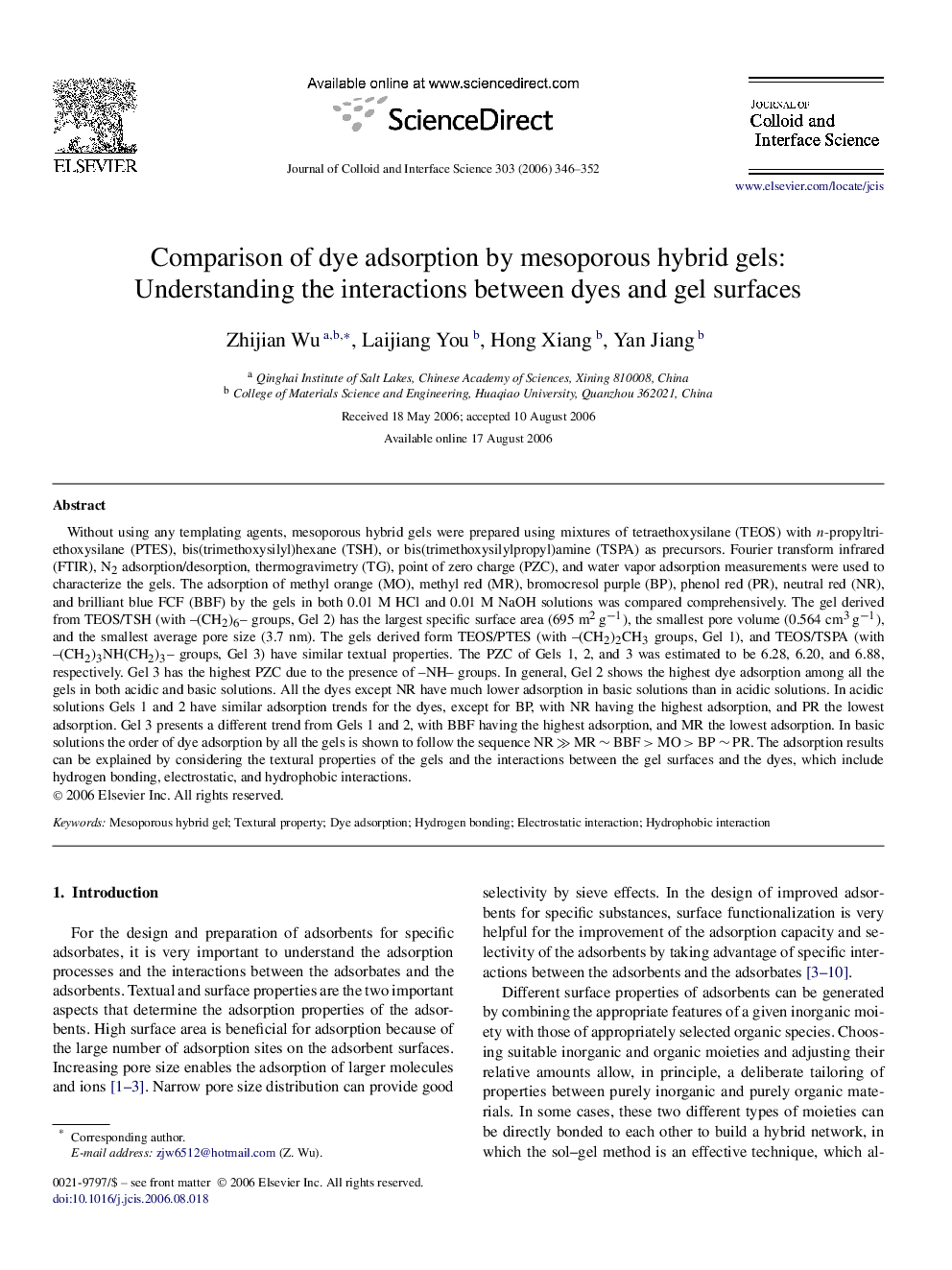| کد مقاله | کد نشریه | سال انتشار | مقاله انگلیسی | نسخه تمام متن |
|---|---|---|---|---|
| 612870 | 880709 | 2006 | 7 صفحه PDF | دانلود رایگان |

Without using any templating agents, mesoporous hybrid gels were prepared using mixtures of tetraethoxysilane (TEOS) with n-propyltriethoxysilane (PTES), bis(trimethoxysilyl)hexane (TSH), or bis(trimethoxysilylpropyl)amine (TSPA) as precursors. Fourier transform infrared (FTIR), N2 adsorption/desorption, thermogravimetry (TG), point of zero charge (PZC), and water vapor adsorption measurements were used to characterize the gels. The adsorption of methyl orange (MO), methyl red (MR), bromocresol purple (BP), phenol red (PR), neutral red (NR), and brilliant blue FCF (BBF) by the gels in both 0.01 M HCl and 0.01 M NaOH solutions was compared comprehensively. The gel derived from TEOS/TSH (with (CH2)6 groups, Gel 2) has the largest specific surface area (695 m2 g−1), the smallest pore volume (0.564 cm3 g−1), and the smallest average pore size (3.7 nm). The gels derived form TEOS/PTES (with (CH2)2CH3 groups, Gel 1), and TEOS/TSPA (with (CH2)3NH(CH2)3 groups, Gel 3) have similar textual properties. The PZC of Gels 1, 2, and 3 was estimated to be 6.28, 6.20, and 6.88, respectively. Gel 3 has the highest PZC due to the presence of NH groups. In general, Gel 2 shows the highest dye adsorption among all the gels in both acidic and basic solutions. All the dyes except NR have much lower adsorption in basic solutions than in acidic solutions. In acidic solutions Gels 1 and 2 have similar adsorption trends for the dyes, except for BP, with NR having the highest adsorption, and PR the lowest adsorption. Gel 3 presents a different trend from Gels 1 and 2, with BBF having the highest adsorption, and MR the lowest adsorption. In basic solutions the order of dye adsorption by all the gels is shown to follow the sequence NR ≫ MR ∼ BBF > MO > BP ∼ PR. The adsorption results can be explained by considering the textural properties of the gels and the interactions between the gel surfaces and the dyes, which include hydrogen bonding, electrostatic, and hydrophobic interactions.
Figure optionsDownload as PowerPoint slide
Journal: Journal of Colloid and Interface Science - Volume 303, Issue 2, 15 November 2006, Pages 346–352